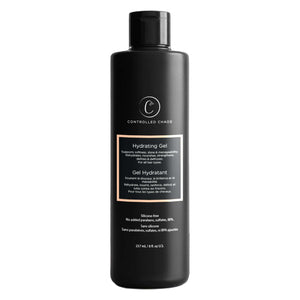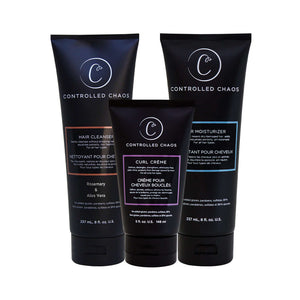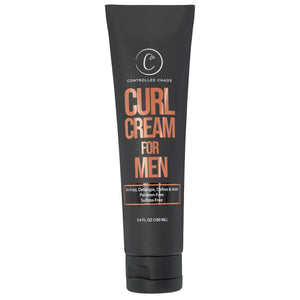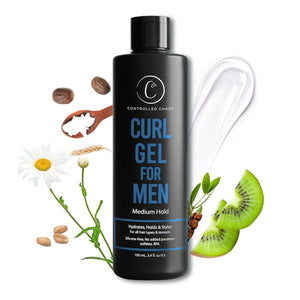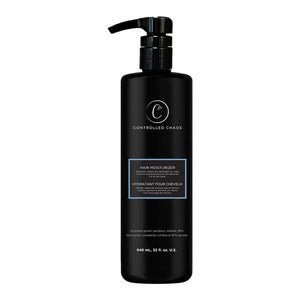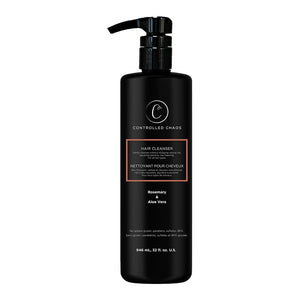

Dry hair can be a frustrating issue, leaving strands brittle and prone to breakage. While many hair care routines focus on shampoos and regular conditioners, leave-in conditioners have become a popular solution for combating dryness. But you might have a question: can I put leave in conditioner on dry hair? In this blog, we will discuss how to rescue dry hair using a leave-in conditioner. Additionally, we will explore how a leave-in conditioner can help keep your dry, brittle strands hydrated throughout the day.
Can You Use Leave-In Conditioner on Dry Hair?
Yes! Leave-in conditioner can be used on dry hair, and in fact, it’s an excellent solution. Using it on dry hair provides an instant moisture boost. Here’s how it works:
-
Moisture Retention: Leave-in conditioners contain humectants and oils that attract and lock in water. It helps dry strands regain hydration.
-
Smooths Frizz: When applied to dry hair, leave-in conditioner helps tame frizz and makes hair more manageable.
-
Adds Protection: Dry hair is more prone to breakage. Leave-in conditioner forms a protective layer around each strand, reducing damage.
-
Improves Elasticity: Well-hydrated hair is stronger and more elastic, reducing the risk of split ends.
How to Apply Leave-In Conditioner on Dry Hair?
Using leave-in conditioner on dry hair is slightly different from using it on wet hair. Follow these steps for the best results:
-
Start with Clean Hair: While leave-in conditioner can be used on dehydrated hair, lightly misting hair with water can help the product spread evenly. However, you can also use them on your dry hair.
-
Use the Right Amount: Too much leave-in can make hair greasy. Start with a small amount. Focus on the mid-lengths and ends, where hair is driest.
-
Distribute Evenly: Use your fingers or a wide-tooth comb to distribute the product evenly. Avoid applying too much product to the roots, as this can weigh down the hair.
-
Style as Usual: Leave-in conditioner can be left in without rinsing, making it perfect for adding moisture before styling. Once you apply it, you can easily style it with braids or curls.
Tips for Dry Hair
-
Limit Heat Styling: Frequent use of blow dryers, straighteners, or curling irons can strip the hair of its natural moisture. Apply leave-in conditioner before using heat.
-
Protect Hair at Night: Using a silk pillowcase can reduce friction and prevent further dryness.
-
Avoid Over-Washing: Shampooing too often removes natural oils. Try washing your hair less frequently and using a hydrating shampoo. Refreshing dry hair is not more difficult; you just need to apply it to your dry hair, and it will become refreshed.
-
Deep Conditioning: Complement your leave-in conditioner with occasional deep conditioning masks. These masks are great for adding hydration to dry, frizzy hair.
Choosing the Right Conditioner
Not all leave-in conditioners are created equal, especially when it comes to dry hair. The ideal formula should contain ingredients that provide intense hydration. Look for products that include:
-
Natural oils, such as sunflower oil, to lock in moisture
-
Humectants like honey that draw water into the hair shaft
-
Proteins to strengthen weakened strands and prevent breakage
Controlled Chaos Leave-in Conditioner contains all the above ingredients, ensuring your hair receives long-lasting moisture.
When to Use?
Apply leave-in conditioner at different times, depending on your hair's specific needs. Here is how you should apply it to your dry hair.
-
Morning Refresh: Spritz a light leave-in on dry hair in the morning to tame frizz. This will instantly add shine and revive curls.
-
Before Styling: Apply before using heat tools to protect hair from damage. The protective layer reduces moisture loss.
-
Throughout the day: Some leave-in sprays are light enough to use for touch-ups, especially in dry or windy weather.
This flexibility makes leave-in conditioner a versatile tool in any hair care routine.
Common Mistakes to Avoid
Even with the best intentions, misusing leave-in conditioner can reduce its effectiveness. Here are some common pitfalls to avoid:
-
Using Too Much: Overloading hair can leave it greasy or sticky. Start small and add more only if needed.
-
Applying at the Roots: Most dryness occurs at mid-lengths and ends. Avoid applying directly to the scalp unless the product is specifically formulated for use on roots.
-
Skipping Detangling: Leave-in conditioner works best when evenly distributed. Gently comb through to avoid knots and ensure complete coverage.
-
Ignoring Complementary Care: Leave-in conditioner is powerful, but it works best when used in conjunction with other healthy hair habits, such as gentle washing, heat protection, and regular trims.
Benefits Beyond Hydration
While hydration is the primary benefit of using leave-in conditioner on dry hair, the advantages go further:
-
Enhanced Manageability: Dry hair can be hard to style. Leave-in conditioner softens the strands, making detangling easier. Additionally, it is great for reducing hair breakage.
-
Frizz Control: By smoothing the hair cuticle, leave-in conditioners minimize frizz, even in humid conditions.
-
Improved Hair Health: Ingredients like natural oils, proteins, and vitamins help repair and strengthen hair over time.
-
Shine and Softness: Consistent use gives hair a naturally healthy sheen and silky texture.
The Role of Environment
Sometimes, it’s not just your products that cause dryness; your surroundings also play a significant role in contributing to dryness. Factors such as climate and even the water you use can strip your hair of its natural oils.
-
Cold or Dry Climates: The air lacks humidity, drawing moisture out of your hair.
-
Sun Exposure: UV rays weaken the hair shaft, causing dehydration.
-
Hard Water: High mineral content can coat the hair, preventing conditioner from penetrating effectively.
-
Indoor Heating: These can dry out your scalp and hair strands.
Using a leave-in conditioner on dry hair helps create a barrier against these environmental stressors. Thus, it helps maintain hydration and protect the hair’s outer layer.
Signs That Your Hair Needs
If you’re not sure whether your hair is dry enough to need a leave-in, look for these signs:
-
Hair feels rough
-
Difficulty detangling after washing
-
Excessive frizz
-
Dullness or lack of shine
-
Frequent breakage or split ends.
If you notice these symptoms, it’s a clear sign your hair is craving extra moisture. Thus, you should add leave-in conditioner to deliver it without making hair greasy or heavy.
Conclusion
Dry hair can make even the best hairstyles fall flat, but the solution is more straightforward than most think. Using a leave-in conditioner on dry hair provides an immediate surge in moisture. It will repair damage and protect against further dryness. So, the next time you ask yourself, Can I put leave-in conditioner on dry hair, remember that it’s one of the most effective ways to restore moisture and bring life back to dry strands.
By understanding your hair type, selecting the right formula, and applying it correctly, you can revive your dry hair. Remember, hydration isn’t just a step in your routine; it’s the foundation of beautiful hair.
FAQS
Can leave-in conditioner be used on dry hair?
Yes, leave-in conditioner can be safely used on dry hair. It helps to hydrate and soften rough strands instantly. Applying it to dry hair can refresh lifeless locks and make them easier to manage throughout the day.
How to apply it to dry hair?
To apply leave-in conditioner on dry hair, start with a small amount and focus on the mid-lengths and ends. Gently comb through with your fingers to distribute it evenly. Avoid the roots to prevent buildup, and style your hair as usual.



